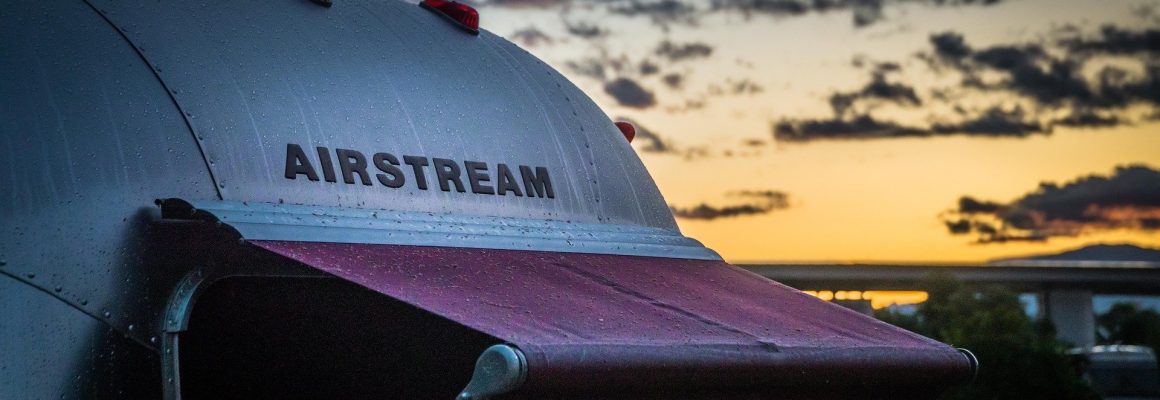How to Protect and Care for Your RV Roof
Susan J

When you’re RVing, you’re never lacking for a roof over your head — as long as you take care of that roof! Neglected roofs will wear down and, ultimately, begin to leak. RV roofs are expensive to fix, up to $300 per linear foot if your roof has experienced extensive damage. So it’s important to give your roof the attention it needs. The time and money you invest caring for your RV roof will pay off later on, as you avoid costly repairs and replacement. In this guide, we’ll share the 411 on RV roofs and the steps you need to take to protect yours.
Types of RV Roofs
The particular care you give your roof will differ depending on the type of roof membrane you have. Rubber roofs, the most common, require extra attention, while fiberglass roofs tend to be lower maintenance. Aluminum roofs are the lowest maintenance of them all. Here’s what you should know about each type of roof.
Rubber Roofs — Rubber is the most popular material for RV roofs because it’s so durable and lightweight. There are a couple of different types of rubber roofs: Ethylene Propylene Diene Monomer (EPDM) and Thermal Polyolefin (TPO). Each type has its own maintenance needs, so you’ll want to refer to your RV’s owner’s manual to make sure you’re caring for it properly. Also note that various cleaning and maintenance products are often designed for one type of rubber or the other.
Fiberglass Roofs — Fiberglass is heavier and more expensive than rubber, but these roofs require less maintenance. If you follow the standard guidelines below, your fiberglass roof shouldn’t need any additional care.
Aluminum Roofs — Aluminum roofs are rare, but still found on some RVs (Airstream is the most well-known). Aluminum, like fiberglass, is heavier than rubber and is the lowest-maintenance type of roof.
Clean Your RV Roof Regularly
Cleaning is the foundational roof care step. Dirt and grime can accumulate on roofs, which will attract mold that can damage the roof. Tree sap and bird droppings can also degrade your roof over time, so it’s important to keep these substances off of it.
When cleaning your RV roof, it’s best to use a ladder rather than climbing onto the roof to clean it. Even if your travel trailer’s roof is designed to support weight, wet roofs are slippery and can be dangerous. Clean your roof at least twice a year, and if you live in a humid climate, at least four times a year.
Begin by sweeping off all debris from the roof. Since grime can embed into the roof fixtures, give particular attention to these areas. While you’re sweeping, inspect the roof for cracks that you’ll address in a later step, and note where they are. Next, rinse the roof with a garden hose.
Rubber Roof Cleaning
Rubber roofs are easily damaged by some chemicals, so it’s important to ensure you’re not using any harsh detergents or acidic cleaners. Each type of rubber roof will require a different type of cleaner, so now is the time to double-check your owner’s manual. After applying the cleaner, scrub the roof with a sponge mop or medium bristle brush. Rinse as you go. Finish by treating the roof with a high-quality protectant that will make your roof last longer.
Fiberglass Roof Cleaning
You’ll follow the same basic steps for cleaning fiberglass roofs, but you’ll use Murphy’s Oil Soap as your cleaner. If you encounter a stubborn stain, you can use fiberglass stain remover. Next, remove any surface oxidation using a polish. It’s a good idea to paint your fiberglass roof with an epoxy-based paint to protect the surface from UV rays and other environmental elements. Fiberglass roofs require an appropriate protectant after cleaning.
Aluminum Roof Cleaning
Aluminum roofs are the easiest to clean, which is one reason Airstream owners love them. These roofs need only regular, gentle cleaning with a specialized cleaner. Some aluminum roofs, particularly those on older RVs, will benefit from waxing, so check your owner’s manual for care recommendations.
How to Prevent RV Roof Leaks: Caulking
Remember those cracks you were looking for when you were cleaning the roof? You won’t find cracks on an aluminum roof, but fiberglass and rubber roofs are both susceptible. If you have cracks, you’ll need to seal them. EternaBond is a great sealant that comes on a roll, like tape. After you complete the cleaning phase, rough up the area where you’ll apply the sealant with a Scotch-Brite pad and then cut the tape, allowing a 2-inch margin around the crack. Press the sealant into place and roll it out smooth with a wallpaper roller.
You may also need to caulk around your air vents and other accessories (except your A/C unit, since sealing it may inhibit air flow). After cleaning, simply load your sealant into a caulking gun and apply. Always check the products you’re using to make sure they’re compatible with your roof type to avoid inadvertently damaging your roof material.
Examine Your RV Roof Accessories
While you’re taking care of your roof, check your roof accessories for damage. Are your skylights, air conditioner unit, vents, and ladder all looking good, or do you notice cracks or other damage? Go ahead and make any needed repairs to any of these items.
Protect Your Roof With an RV Cover
If it sounds like RV roof cleaning and maintenance are a lot of work, well. . . they are! But these tasks are well worth it, considering the enjoyment you’ll get from your RV. If you’re looking for a way to reduce the amount of effort you’ll need to expend, however, look at using RV covers.
Covering your RV’s roof is the easiest way to reduce the amount of cleaning and repairs you’ll need to do. RV roof covers are available, which you can use anytime your RV is parked, such as at the campground. For longer-term storage, you’ll want to use a full RV cover, which will provide extra protection and will keep your entire RV safe from environmental hazards like UV rays, rain, snow, and other elements.

